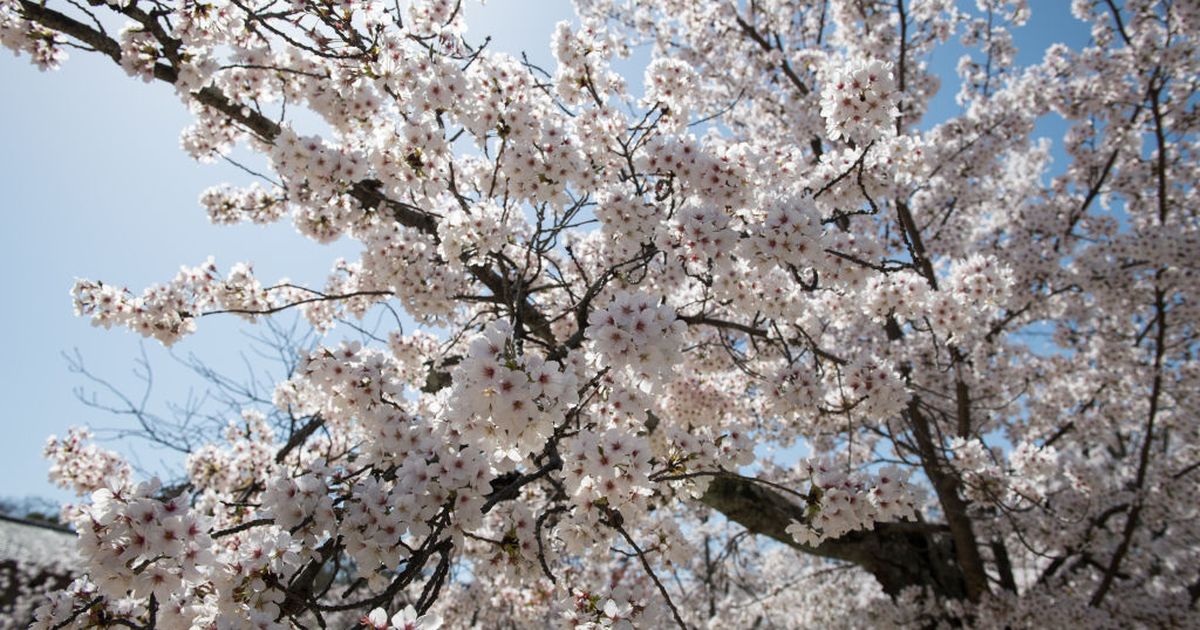
Cherry blossoms in Kyoto, Japan reached peak bloom on March 26 this year — the earliest the event has occurred in 1,200 years of records. Why so soon? Climate change, constantly pushing our warming planet towards an inhospitable hellscape. But at least we’ll get to look at pretty flowers while we die.
According to over 1,000 years of records previously compiled by Osaka Prefecture University professor Yasuyuki Aono, Kyoto’s cherry blossoms had consistently flowered around April 10 to 17 for over a millennium. Unfortunately, this window has since moved forward. The Washington Post reports that Japan’s most famous flowers have been trending toward blooming earlier each spring, with scientists attributing the phenomenon to increasing global temperatures.
And this year, the peak has shifted all the way into the previous month.
“The Kyoto Cherry Blossom record is incredibly valuable for climate change research because of its length and the strong sensitivity of flowering to springtime temperatures,” Columbia University research scientist Benjamin Cook told the Post, noting that warmer temperatures typically mean cherry blossoms bloom earlier.
Cherry blossoms are so sensitive to temperature that trees in Tokyo even bloomed in autumn after typhoons prompted warmer weather in 2018. Meanwhile, Aono estimated that Kyoto has warmed by 6.1 degrees Fahrenheit (3.4 degrees Celsius) since 1820.
It’s worth nothing that while this year’s cherry blossom peak was Kyoto’s earliest in 1,200 years, this isn’t the case in other parts of Japan. Tokyo reached peak bloom on March 22, which is three days earlier than average and the earliest date since 1953.
However the global trend seems to be slowly pushing cherry blossoms into full bloom to earlier in the year regardless of where they’re planted. In 2019, National Park Service scientist Patrick Gonzalez noted that the trend of earlier blooming seen among cherry blossoms in Washington, D.C. was “consistent with human-caused climate change.”
Cherry blossoms are considered in full or peak bloom when 80 percent of the flowers have bloomed, which usually occurs within a week of the first flowers opening.
Of course, as always, elements other than climate change may also be involved in the early blooming. Gonzalez offered the caveat that “no research has definitively examined all of the factors,” and Cook acknowledged that increased urbanisation is a likely contributor as well.
Even so, there’s no denying that our warming world is the most obvious and pressing culprit.
